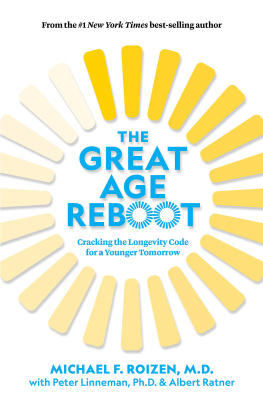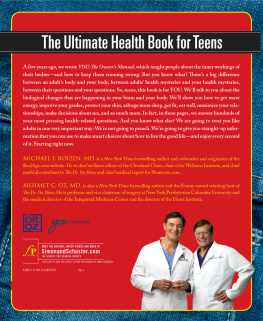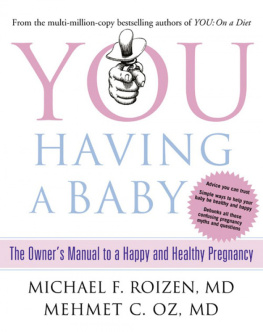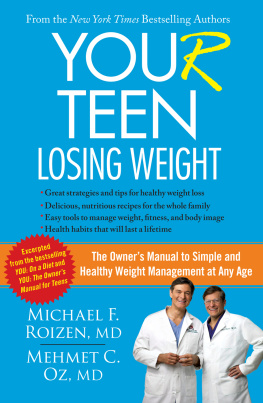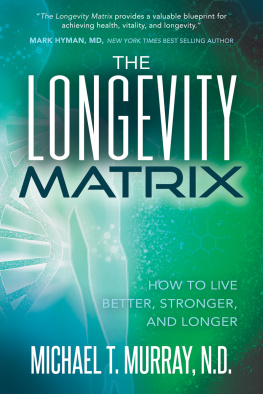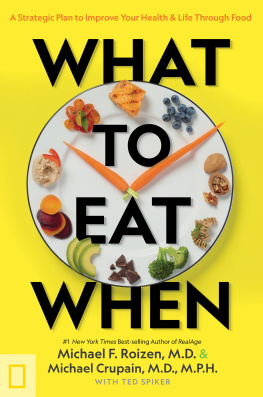Contents
Guide
Since 1888, the National Geographic Society has funded more than 14,000 research, conservation, education, and storytelling projects around the world. National Geographic Partners distributes a portion of the funds it receives from your purchase to National Geographic Society to support programs including the conservation of animals and their habitats.
Get closer to National Geographic Explorers and photographers, and connect with our global community. Join us today at nationalgeographic.com/join
For rights or permissions inquiries, please contact National Geographic Books Subsidiary Rights:
Copyright 2022 Michael F. Roizen. All rights reserved. Reproduction of the whole or any part of the contents without written permission from the publisher is prohibited.
NATIONAL GEOGRAPHIC and Yellow Border Design are trademarks of the National Geographic Society, used under license.
Library of Congress Cataloging-in-Publication Data
Names: Roizen, Michael F., author. | Linneman, Peter, author. | Ratner, Albert, author. | Spiker, Ted, author.
Title: The great age reboot : cracking the longevity code for a younger tomorrow / Michael F. Roizen, M.D., Peter Linneman, Ph.D., Albert Ratner with Ted Spiker.
Description: Washington, DC : National Geographic, [2022] | Includes bibliographical references and index. | Summary: As the human lifespan expands and more people are living to 100 years and beyond, New York Times best-selling author Michael Roizen, M.D., explains how to prepare for a longer, healthier future-- Provided by publisher.
Identifiers: LCCN 2021031353 (print) | LCCN 2021031354 (ebook) | ISBN 9781426221514 (hardcover) | ISBN 9781426221521 (ebook)
Subjects: LCSH: Longevity. | Aging--Prevention. | Self-care, Health.
Classification: LCC RA776.75 .R647 2022 (print) | LCC RA776.75 (ebook) | DDC 612.6/8--dc23
LC record available at https://lccn.loc.gov/2021031353
LC ebook record available at https://lccn.loc.gov/2021031354
22/WOR/1
This publication is based on research and contains the opinions and ideas of the authors. It is intended to provide helpful and informative material on the subjects addressed in the publication. It is sold with the understanding that the authors and publisher are not engaged in rendering medical, health, or other professional advice to the individual reader. The reader should not use the information contained in this book as a substitute for the advice of a licensed health care professional.
To the best of the authors knowledge, the information provided is accurate at the time of publication.
The authors and publisher disclaim any liability whatsoever with respect to any loss, injury, or damage arising directly or indirectly from the use of this book.
PREFACE
LATE IN 2020, HEADLINES SWIRLED around the health story of the yearprobably the health story of the decade. The world was focused on vaccines and ventilators, on death rates and masking guidelines. COVID-19 consumed usand for good reason.
But for the better part of that year and the previous two (and really, since I had graduated from medical school), I had spent much of my time looking at the other end of the spectrumthe jaw-dropping medical, technological, and scientific advances that were about to significantly extend lives, rather than shorten them.
Over the course of my career, I had immersed myself in stem cells, genetics, robots, and more. But I wanted to see some of these new game-changers in action. So, one day in December 2020, I walked about a half-mile on the Cleveland Clinic Skyway from my office to the 3D Print Lab of the Lerner Research Institute at the clinic. There, I met with Ryan Klatte, its principal research engineer and director. He holds a Ph.D. in engineering and loves talking about the 3D printing of organs.
Around the lababout the size of a modest living roomRyan showed me the groups printers, as well as a few of the model organs and body parts they had produced. Pediatric hearts with complex congenital abnormalities, a pancreas with a specific tumor close to a bile duct, a kidney with arterial abnormalities, fatty tissue for a breast reconstruction, an aneurysm. They had all been modeled from CT and MRI scans of real people, with the tissues in question printed with different color resins. This way, a surgeon could examine the model in three dimensions and make decisions based on the patients specific anatomybefore operating.
Ryan showed me a model of a liver from a potential donor. The colored resins clearly showed where veins, bile ducts, and vessels resided, so that surgeons would know exactly where to cut to avoid hitting parts of the circulatory or biliary systems that could cause life-threatening damage.
Though all human anatomy is essentially the same, there are some minor differencesplacement of fat, the road map of blood and bile vesselsfrom person to person. When doctors can see the organ (or tumor or tissue) in three dimensions before they operate, they are able to design an efficient, effective, and safe surgical strategy (especially in cases with challenging or distorted anatomy). These 3D models were saving peoples lives in ways that were never possible before.
But thats not where the story ends. Its actually where it begins.
What if that same 3D printer could produce not only models of organs, but the organs themselves? Now, plastic thrown into recycling bins is transformed into resin to build replicas. But what if unwanted fat from liposuction operations could be reprinted as a new heart or breast? What if these printers could use young cells to print actual organs, cells, and tissuesany you needto replace the dysfunctional ones?
This process, of course, would be incredibly complex. But in essence, heres what it would involve:
1. Filling the printers cartridges with three or more kinds of cells: those of the tissue or organ being created, and those forming vessels and nerves needed to connect it to the body.
2. Printing a matrix in the shape of the organ, made of biodegradable material, that would stand in for that organ until the cells could grow into it and take over.
This could be our future.
Development of this kind of technology is now happening all over the world. And so is work on many other major advances that are about to fundamentally change the way we approach medicine and health.
Thats what this book is aboutthe what ifs that are knocking on societys door.
What if...we could replace organs by printing new ones?
What if...we could reprogram our dying cells to be youthful ones?
What if...we could rewrite our DNA to lead us to a healthier future?
Not only would we live longer, but we would live younger. In 1998, we believed age 60 could be the new 40. In 2030, that potential expands dramatically: 90 could be the new 40. Old age wouldnt be, well, old.
Of the 14 major areas of new research developing around longevity (see pages 5960), there will be a few treatments that become commonplace and help you stay younger longer (while its impossible to predict which ones, we have our guesses). Those advances will exponentially change society and our economy and will also change you and your future.
My co-authors, Peter Linneman, Ph.D., and Albert Ratner, and I refer to this transformation as the Great Age Reboot. This book contains our research explaining what that reboot means for you: what breakthroughs are on the horizon, and what you can do to prepare for the coming shift.

